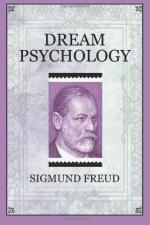Another manifestation of the dream work which all incoherent dreams have in common is still more noticeable. Choose any instance, and compare the number of separate elements in it, or the extent of the dream, if written down, with the dream thoughts yielded by analysis, and of which but a trace can be refound in the dream itself. There can be no doubt that the dream working has resulted in an extraordinary compression or condensation. It is not at first easy to form an opinion as to the extent of the condensation; the more deeply you go into the analysis, the more deeply you are impressed by it. There will be found no factor in the dream whence the chains of associations do not lead in two or more directions, no scene which has not been pieced together out of two or more impressions and events. For instance, I once dreamt about a kind of swimming-bath where the bathers suddenly separated in all directions; at one place on the edge a person stood bending towards one of the bathers as if to drag him out. The scene was a composite one, made up out of an event that occurred at the time of puberty, and of two pictures, one of which I had seen just shortly before the dream. The two pictures were The Surprise in the Bath, from Schwind’s Cycle of the Melusine (note the bathers suddenly separating), and The Flood, by an Italian master. The little incident was that I once witnessed a lady, who had tarried in the swimming-bath until the men’s hour, being helped out of the water by the swimming-master. The scene in the dream which was selected for analysis led to a whole group of reminiscences, each one of which had contributed to the dream content. First of all came the little episode from the time of my courting, of which I have already spoken; the pressure of a hand under the table gave rise in the dream to the “under the table,” which I had subsequently to find a place for in my recollection. There was, of course, at the time not a word about “undivided attention.” Analysis taught me that this factor is the realization of a desire through its contradictory and related to the behavior of my wife at the table d’hote. An exactly similar and much more important episode of our courtship, one which separated us for an entire day, lies hidden behind this recent recollection. The intimacy, the hand resting upon the knee, refers to a quite different connection and to quite other persons. This element in the dream becomes again the starting-point of two distinct series of reminiscences, and so on.
The stuff of the dream thoughts which has been accumulated for the formation of the dream scene must be naturally fit for this application. There must be one or more common factors. The dream work proceeds like Francis Galton with his family photographs. The different elements are put one on top of the other; what is common to the composite picture stands out clearly, the opposing details cancel each other. This process of reproduction partly explains the wavering statements, of a peculiar vagueness, in so many elements of the dream. For the interpretation of dreams this rule holds good: When analysis discloses uncertainty, as to either—or read and, taking each section of the apparent alternatives as a separate outlet for a series of impressions.




